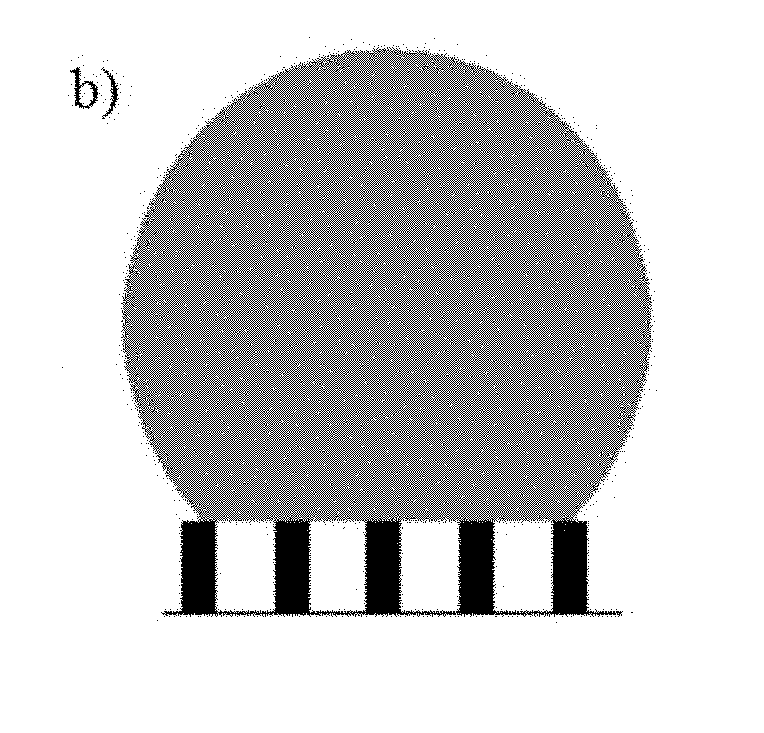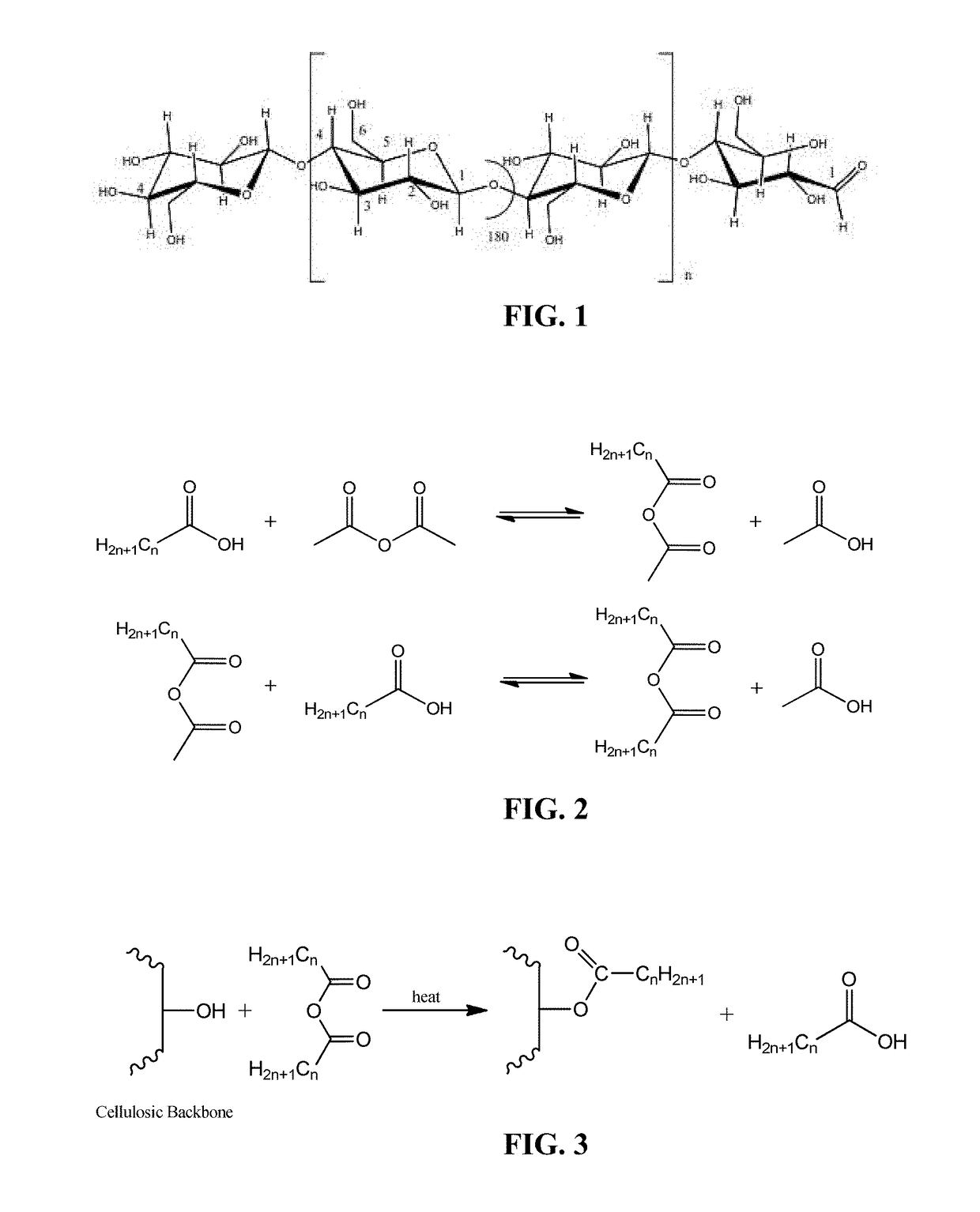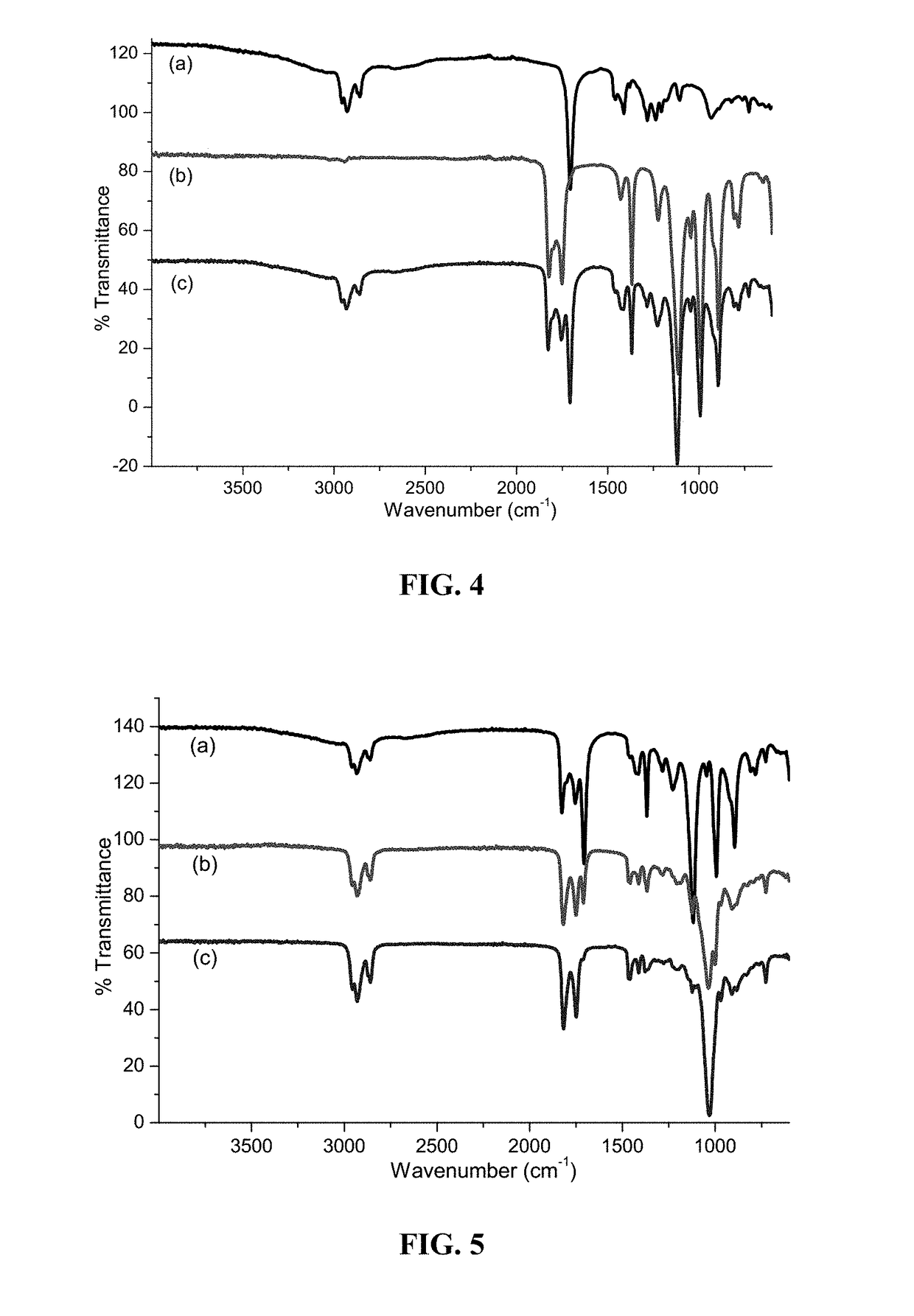Modified cellulosic compositions having increased hydrophobicity and processes for their production
- Summary
- Abstract
- Description
- Claims
- Application Information
AI Technical Summary
Benefits of technology
Problems solved by technology
Method used
Image
Examples
example 2
‘Green’ Surface Treatment for Water Repellent Cotton Fabrics
1. Abstract
[0289]A ‘green’ method to obtain water repellent (hydrophobic) cotton fabrics has been developed. Aliphatic fatty chains were grafted onto cotton (cellulose) fiber surface to decrease the surface energy and, thus, obtain the water repellency. A benign accelerator was used to facilitate the reactivity between fatty acid and cellulosic hydroxyl groups. Microwave heating, an energy efficient method, was used to reach the reaction temperature.
[0290]Fatty anhydride, considered to have higher reactivity than fatty acid, was initially prepared. The chemical process was monitored using HPLC and ATR-FTIR techniques. Effect of fatty acid chain lengths as well as microwave heating parameters were studied on hydrophobicity of the resulting cotton fabrics. Resulting hydrophobic cotton fabrics were characterized by water contact angle, laundry durability test, tensile test, ATR-FTIR and SEM.
[0291]The green method developed her...
example 3
Ultrahydrophobic Cotton Based on Halloysite Nanotubes Decorated sith Silica Nanospheres and Fatty Acid
Abstract
[0352]Direct assembly of silica nanospheres on halloysite nanotubes for ultrahydrophobic cotton fabrics is shown. The main aim of the present research is to fabricate ultrahydrophobic cotton fabrics using green chemistry. Amine functionalized silica nanospheres were assembled on the surface of halloysite nanotubes (HNTs) and covalently bonded onto the cotton fabrics. Any other particles can also be used in place of HNT in the same fashion to obtain the surface roughness and resulting ultrahydrophobicity. Any other cellulosic fabrics such as viscose rayon can also be treated using the same process. This new approach was designed to create a multiple size roughness on the surface of the fabrics. The covalent bonding of the halloysite nanotubes decorated with silica nanospheres ensures the long term durability of the modified cotton fabrics during wear and washing. It also decr...
PUM
| Property | Measurement | Unit |
|---|---|---|
| Size | aaaaa | aaaaa |
| Size | aaaaa | aaaaa |
| Size | aaaaa | aaaaa |
Abstract
Description
Claims
Application Information
 Login to View More
Login to View More - R&D
- Intellectual Property
- Life Sciences
- Materials
- Tech Scout
- Unparalleled Data Quality
- Higher Quality Content
- 60% Fewer Hallucinations
Browse by: Latest US Patents, China's latest patents, Technical Efficacy Thesaurus, Application Domain, Technology Topic, Popular Technical Reports.
© 2025 PatSnap. All rights reserved.Legal|Privacy policy|Modern Slavery Act Transparency Statement|Sitemap|About US| Contact US: help@patsnap.com



